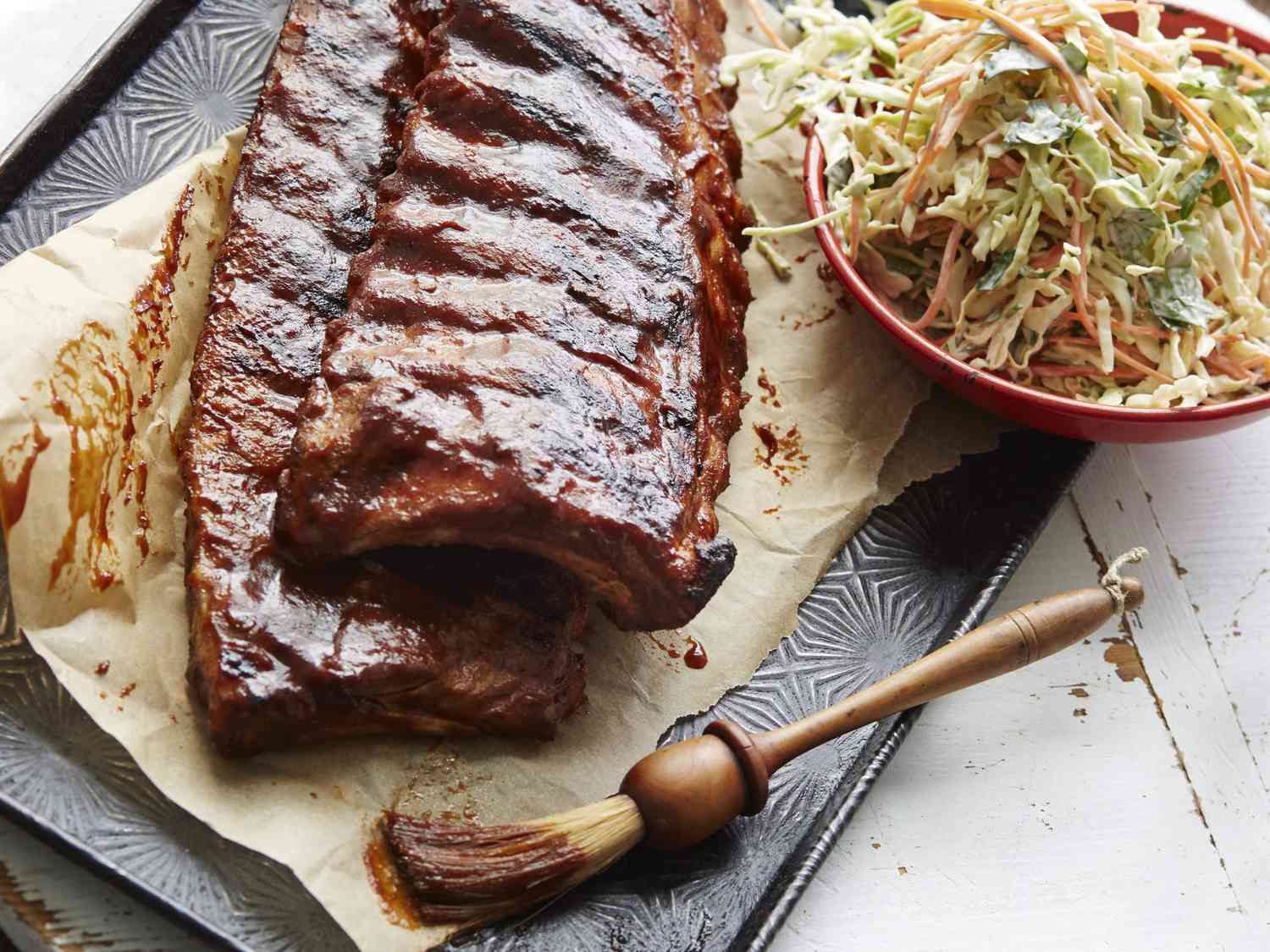
Grilled ribs are a staple barbecue recipe—and for good reason; when cooked properly, they’re fall-off-the-bone tender with deep, meaty flavor. There are pitmasters worldwide who are committed to perfecting their rib-grilling technique, but that doesn’t mean you have to leave it to the professionals. Keep reading to learn all about the most popular rib cuts—pork and beef alike—and how to cook ribs on the grill confidently at home.
Choosing Ribs to Grill
When shopping for ribs, you first need to decide whether you’re opting for pork or beef. Pork ribs are smaller, and beef ribs are bigger, which translates to different cooking times. Beef ribs are also fattier than pork ribs, which yields an intense, beefy flavor when the fat renders.
Since pork ribs have a lower fat content, the flavor is milder. If you want to highlight a punchy marinade recipe, it’s best to go with pork. Lastly, pork ribs are considerably less expensive and easier to source than beef ribs.
As far as what type of grill is best for cooking ribs—gas or charcoal—this is mostly a personal preference. However, there will be some variations in taste. Grilling ribs on a charcoal grill gives them a smokier flavor and scent. Gas grills tend to provide a deeper pork flavor to pork ribs—and render moister ribs than charcoal grilling.
For all ribs, look for cuts with good meat coverage over the bones and even fat marbling and rack thickness. The color of the meat should be a vibrant pinkish-red, which indicates freshness.
How to Grill Beef Back and Pork Ribs
The most popular pork ribs are baby back ribs, spare ribs, country-style ribs, and St. Louis ribs. You will grill most of these the same way, except you’ll need to cook country-style ribs a bit longer.
As the name suggests, beef back ribs come from just beneath the backbone and refer to the meat remaining once the prime rib and ribeye have been removed. While there isn’t a lot of meat on the back ribs, the meat is high-quality and succulent.
Here’s how to get started with these cuts of meat:
- For baby back, spare, and beef back ribs, remove the membrane from the underside of the ribs (if your butcher hasn’t removed it already) the night before grilling. Just insert a knife between the membrane and meat to loosen the skin, then use your fingers to pull it off.
- Marinate the ribs, preferably overnight.
- Clean and preheat your grill on low heat, establishing an area with indirect heat and greasing the grates.
- Remove the ribs from the marinade and add them to the grill over indirect heat, bone-side down.
- Cover the grill and cook, rotating once or twice, until the meat is tender and the internal temperature reaches somewhere between 180 and 195 degrees. Depending on the size of your ribs, this could take 1-3 hours.
- Let rest for at least 10 minutes before separating and eating.
Most pork ribs have a classic rib appearance and take well to the same low and slow grilling treatment. Since country-style ribs are quite fatty, it’s best to cook them extra slowly, allowing the fat to render fully.
How to Grill Beef Short Ribs
Short ribs are cut from the chuck area and are nicely marbled, which gives them a rich flavor. Although they’re most commonly braised, short ribs are also excellent on the grill. In contrast with other cuts, short ribs are best grilled to a lower temperature (about 145 degrees) over higher heat. Salt and pepper are all you need to highlight this delicious cut.
- Clean and preheat your grill to high heat. Grease the grates.
- Season your short ribs with salt and pepper, then add them to the grill.
- Cook, turning frequently, until the internal temperature reads about 145 degrees. This should take around 10 minutes, depending on the size of the ribs.
- Let rest for at least 10 minutes before serving.
